The Ultimate Guide to Herbs and Supplements for Rheumatoid arthritis
Written by Tracy Stickler
| Published on May 15, 2014
Medically Reviewed by George Krucik, MD, MBA on May 15, 2014
Medically Reviewed by George Krucik, MD, MBA on May 15, 2014
Rheumatoid Arthritis Facts
Rheumatoid arthritis (RA) is a
chronic, autoimmune disease that affects one or more small joints of the hands,
wrists, and feet. Flare-ups come and go, and the disease and worsening symptoms
progress over time. As the disease progresses, pain, stiffness, and swollen
joints intensify, often making mobility and daily life difficult.
With no known cause and no cure, treatments focus on reducing flare-ups, managing symptoms, improving flexibility, and slowing the progression of the disease. Various medications, including anti-inflammatories and corticosteroids, help relieve joint pain and reduce inflammation associated with RA.
But more people are turning towards natural remedies, including simple lifestyle changes such as eating foods with anti-inflammatory properties, getting adequate sleep, practicing relaxation techniques, and exercising regularly. In addition, complimentary therapies, such as topical creams, fish oil supplements, and certain plant oils are being used to provide temporary pain relief and ease stiffness and inflammation.
Research on the efficacy of natural treatments is often mixed, and some herbal remedies can have serious side effects, particularly thunder god vine.
Read on to discover some of the herbs and supplements being used to combat RA pain, and work with your doctor to find the right treatment combination for you.
With no known cause and no cure, treatments focus on reducing flare-ups, managing symptoms, improving flexibility, and slowing the progression of the disease. Various medications, including anti-inflammatories and corticosteroids, help relieve joint pain and reduce inflammation associated with RA.
But more people are turning towards natural remedies, including simple lifestyle changes such as eating foods with anti-inflammatory properties, getting adequate sleep, practicing relaxation techniques, and exercising regularly. In addition, complimentary therapies, such as topical creams, fish oil supplements, and certain plant oils are being used to provide temporary pain relief and ease stiffness and inflammation.
Research on the efficacy of natural treatments is often mixed, and some herbal remedies can have serious side effects, particularly thunder god vine.
Read on to discover some of the herbs and supplements being used to combat RA pain, and work with your doctor to find the right treatment combination for you.
King of Bitters (Andrographis paniculata)
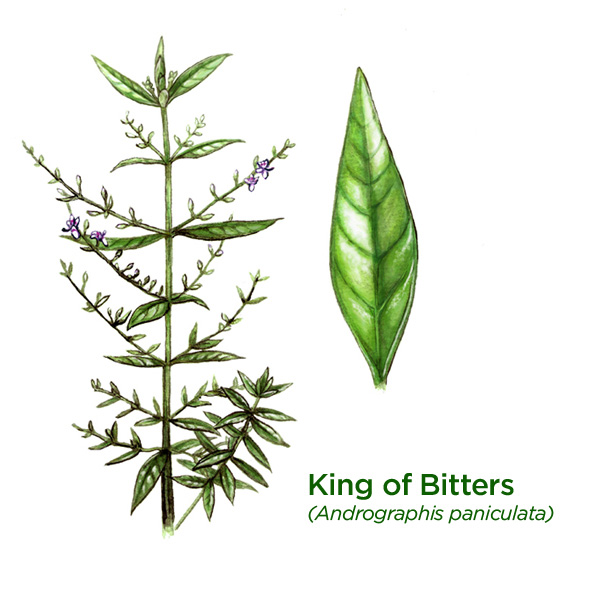 Native to Asia, Andrographis
paniculata, better known as king of bitters, is a plant mentioned in Chinese medicine as early as 260
BC. The herbaceous plant is widely cultivated for its anti-inflammatory,
anti-viral, antioxidant, and anti-bacterial properties, and it has been used in
traditional medicine to treat
upper respiratory infections, infectious diseases, and fevers (National Institutes of Health, 1999).
Native to Asia, Andrographis
paniculata, better known as king of bitters, is a plant mentioned in Chinese medicine as early as 260
BC. The herbaceous plant is widely cultivated for its anti-inflammatory,
anti-viral, antioxidant, and anti-bacterial properties, and it has been used in
traditional medicine to treat
upper respiratory infections, infectious diseases, and fevers (National Institutes of Health, 1999).The plant has been purported to treat cold & flu, cancer, HIV, and inflammation, but scientific research is inconclusive. One report notes that when taken orally three times a day over 14 weeks, patients reported significant improvement in swollen joints and mobility. (Burgos,Hancke,et al. 2009).
The herbal remedy can be found most readily in tablet form and side effects include headaches, fatigue, nausea, allergic reactions, diarrhea, and change in taste.
Borage Oil (Borago officinalis)
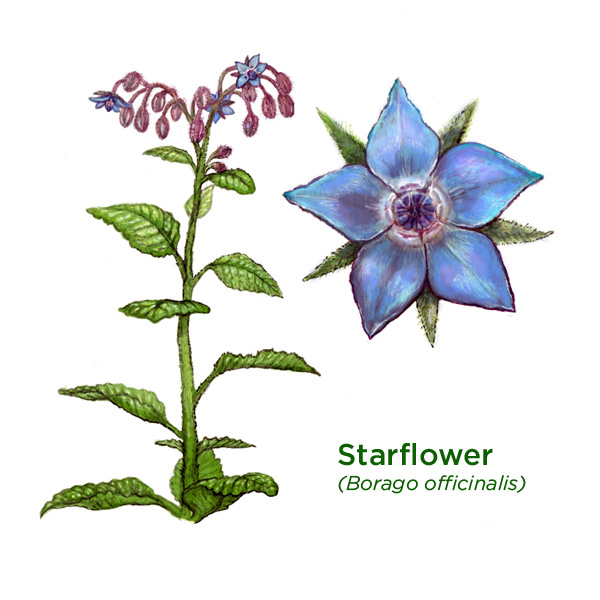 Borago officinalis, also known as starflower, is an herb that has been used as a medicinal for
thousands of years. Greek and Celtic cultures used borage to lift spirits,
while later the English used the oil to flavor wine in order to boost the courage
of soldiers. Gamma-linolenic acid (GLA) is an omega-6 fatty acid and the active
ingredient in borage oil, which is produced from the plant’s seeds.
Borago officinalis, also known as starflower, is an herb that has been used as a medicinal for
thousands of years. Greek and Celtic cultures used borage to lift spirits,
while later the English used the oil to flavor wine in order to boost the courage
of soldiers. Gamma-linolenic acid (GLA) is an omega-6 fatty acid and the active
ingredient in borage oil, which is produced from the plant’s seeds.Some studies suggest that GLA may be effective at relieving joint pain and stiffness, and at times has reduced the need for NSAID medication. Taken in capsule form, it may reduce joint tenderness and inflammation. Side effects include headache and constipation. Talk to your doctor before taking the supplement.
Boswellia (Boswellia serrata)
Native
to India and Pakistan, the scrubby tree Boswellia
serrata possesses a long history of medicinal use as an anti-inflammatory.
Also known as Indian frankincense, the bark produces a sticky resin found to
contain anti-inflammatory properties. Boswellic acids are thought to interfere
with leukotrienes, which cause inflammation in the body. The herbal remedy is
primarily available in capsule form or as a topical cream. Study results of the
plant’s effectiveness are inconclusive.
Bromelain (Ananas comosus)
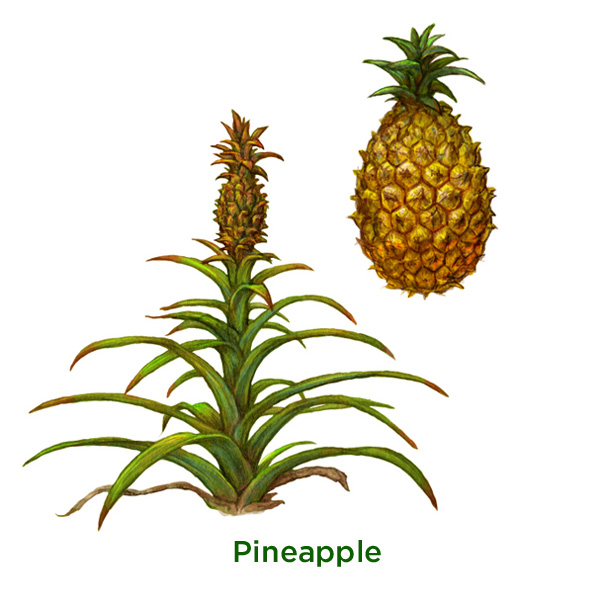 The
tropical pineapple plant contains the active enzyme bromelain. The plant has
been used for centuries in Central and South America to treat both inflammation
and indigestion. While its primary use has been to reduce inflammation caused
by infection, research has been conducted to test its effectiveness on arthritis
pain.
The
tropical pineapple plant contains the active enzyme bromelain. The plant has
been used for centuries in Central and South America to treat both inflammation
and indigestion. While its primary use has been to reduce inflammation caused
by infection, research has been conducted to test its effectiveness on arthritis
pain.The University of Maryland Medical Center reports that studies show possibilities for easing inflammation associated with osteoarthritis (OA). Anyone with pineapple allergies or sensitivity to wheat, celery, carrot, fennel, grass, or cypress pollen should avoid taking bromelain.
Calcium
Calcium
is critical to maintaining bone density. Many RA medications can contribute to
bone loss, and inactivity from inflammation and pain can further deteriorate
bone health. A calcium-rich diet along with a supplement can be an important
part of treatment. Dark green, leafy vegetables, low-fat dairy products, and
calcium-fortified beverages should all be part of a daily diet for RA patients.
The National Institute of Arthritis and Musculoskeletal and Skin Diseases
(NIAMS) and the National Institute of Health (NIH) recommend
a 1,000-milligram supplement for all adults under 50, and 1,200 mgs for women
over 50 and men over 70.
Cayenne Pepper (Capsicum spp.)
The
cayenne pepper has a long history of medicinal use as a digestive aid, but is
used more widely today to treat pain. Peppers contain an active substance
called capsaicin. Topical creams of capsaicin may be applied to temporarily relieve minor aches and
pains associated with arthritis.
According to the NYU Langone Medical Center, capsaicin cream has been confirmed as a moderately helpful pain reliever for OA and soft tissue pain. A study cited by NCIB substantiates the effects of the treatment as a topical remedy for mild pain relief.
According to the NYU Langone Medical Center, capsaicin cream has been confirmed as a moderately helpful pain reliever for OA and soft tissue pain. A study cited by NCIB substantiates the effects of the treatment as a topical remedy for mild pain relief.
Cat’s Claw (Unicaria tomentosa)
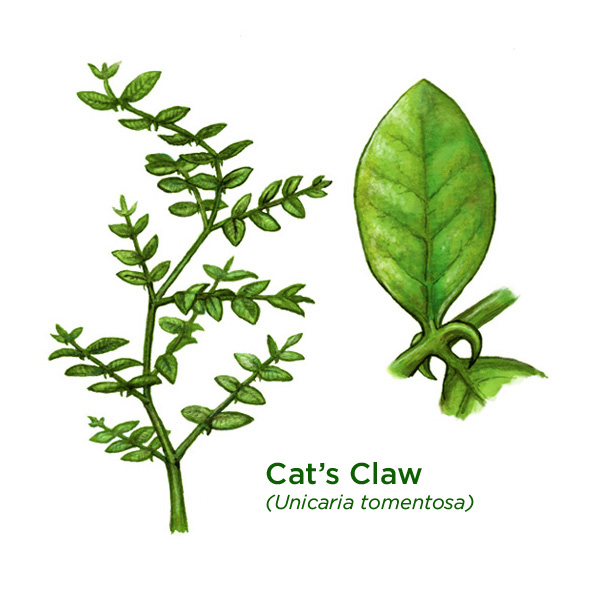 Cat’s
claw originates in the South American rainforest. Used by Peruvian tribes for
over 2,000 years, it has only been studied by the modern medical community
since the 1970s. The plant’s anti-inflammatory properties have been investigated
for its effectiveness in relieving joint pain, swelling, and morning stiffness,
although results have been mixed.
Cat’s
claw originates in the South American rainforest. Used by Peruvian tribes for
over 2,000 years, it has only been studied by the modern medical community
since the 1970s. The plant’s anti-inflammatory properties have been investigated
for its effectiveness in relieving joint pain, swelling, and morning stiffness,
although results have been mixed.A Bastyr University study concluded that cat’s claw displayed effective pain relief when used in conjunction with traditional prescription medications, while other studies are inconclusive. Cat’s claw produces very few side effects, with digestive upset as the primary complaint.
Part 9 of 23: Celery Seed
Celery Seed (Apium graveolens)
Celery
seed has been used for thousands of years to treat everything from colds,
digestion, and arthritis, to conditions related to the liver and spleen. The
herbal remedy is mainly used as a diuretic today; it has gained some support as
an effective treatment for arthritis and gout, but there haven’t been any
scientific studies that support the claims. Some animal studies have shown that
celery root extract may help lower cholesterol and blood pressure (University of Maryland Medical Center, 2013).
Chamomile (Chamomilla recutita)
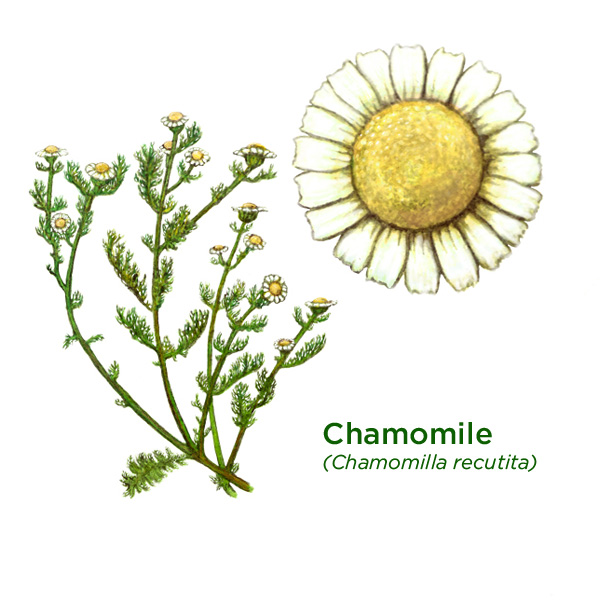 Chamomile
is an ancient herbal remedy that has been used to treat a wide range of
ailments, including inflammation, insomnia, rheumatic pain, and
gastrointestinal disorders. The plant contains spiroether, a known
antispasmodic that may help to ease sore muscles and joint pain. It also
relaxes tension and promotes sleep (Chevallier, 2001).
Chamomile
is an ancient herbal remedy that has been used to treat a wide range of
ailments, including inflammation, insomnia, rheumatic pain, and
gastrointestinal disorders. The plant contains spiroether, a known
antispasmodic that may help to ease sore muscles and joint pain. It also
relaxes tension and promotes sleep (Chevallier, 2001).Many different preparations of chamomile have been used, from its essential oils to herbal tea made from dried flowers and leaves. When used as a tea, chamomile is praised for its anti-inflammatory properties as well as sedative effects. Taken internally, chamomile may be effective at healing sore or irritated skin (Chevallier, 2001).
There is little clinical evidence, however, that supports chamomile as an effective anti-inflammatory for arthritis relief.
Devil’s Claw (Harpagophytum procumbens)
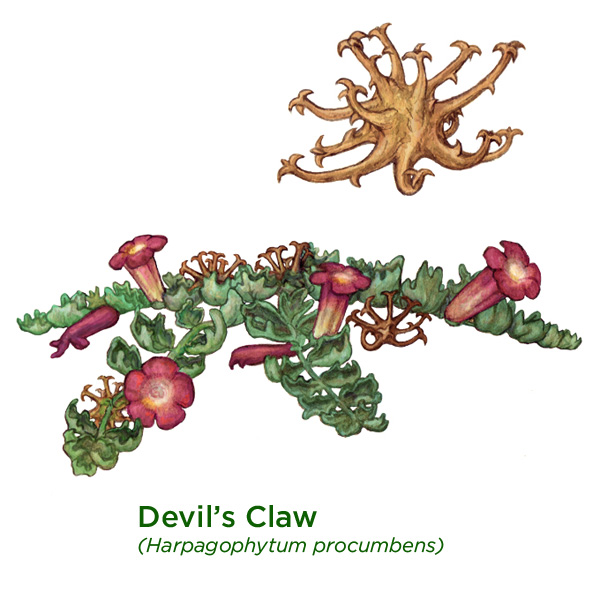 Native
to the Kalahari Desert, devil’s claw’s long tuberous roots have been used in
traditional African medicine for centuries to treat multiple ailments,
including digestive disorders and infections. German agricultural engineer G.H.
Menhert is credited with bringing the herbal remedy to Europe during World War
I.
Native
to the Kalahari Desert, devil’s claw’s long tuberous roots have been used in
traditional African medicine for centuries to treat multiple ailments,
including digestive disorders and infections. German agricultural engineer G.H.
Menhert is credited with bringing the herbal remedy to Europe during World War
I.Root extracts of the plant contain the iridoid glycoside, harpagoside, which has been found to be an effective treatment of RA, OA, and tendonitis (RBG, Kew). Studied in Europe, it showed substantial pain-relieving properties with minimal side effects. (Warnock, 2007) However, NYU Langone Medical Center has reviewed studies conducted with devil’s claw and determined inconclusive results of the herb’s effectiveness.
Fish Oil
Omega-3
fatty acids, the primary ingredient found in fish oil, are healthy fats that
your body needs to perform a number of important functions. Fish high in
omega-3 includes herring, mackerel, and tuna.
There’s been substantial evidence that suggests omega-3 fatty acids may prevent chronic inflammation and ease symptoms associated with arthritis pain. In one study, patients showed significant improvement from baseline joint tenderness and duration of morning stiffness over 26 to 30 weeks. In some instances, omega-3 fatty acids may eliminate the need for continuous NSAIDS use.
People who are taking anticoagulants should discuss using fish oil supplements with their doctor.
There’s been substantial evidence that suggests omega-3 fatty acids may prevent chronic inflammation and ease symptoms associated with arthritis pain. In one study, patients showed significant improvement from baseline joint tenderness and duration of morning stiffness over 26 to 30 weeks. In some instances, omega-3 fatty acids may eliminate the need for continuous NSAIDS use.
People who are taking anticoagulants should discuss using fish oil supplements with their doctor.
Ginger (Zingiber officinale)
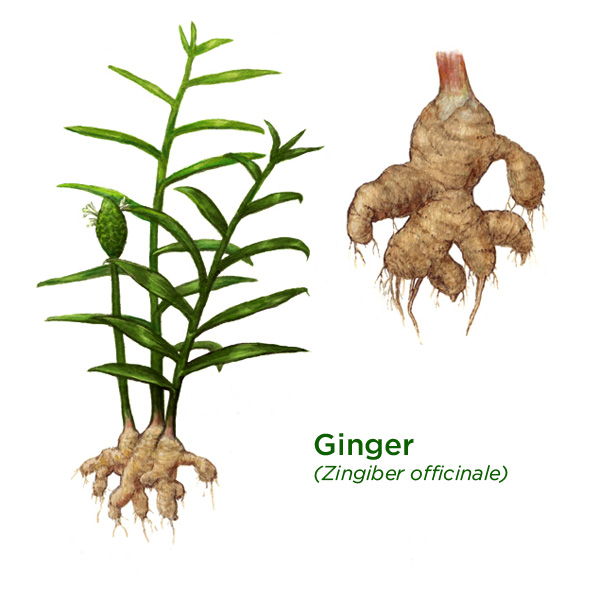 Ginger has been used for thousands of
years to treat everything from colds, nausea,
migraines, digestive disorders, and hypertension. The fresh root is
readily available in grocery stores and can be brewed into tea. It can also be easily
found in supplement form.
Ginger has been used for thousands of
years to treat everything from colds, nausea,
migraines, digestive disorders, and hypertension. The fresh root is
readily available in grocery stores and can be brewed into tea. It can also be easily
found in supplement form.Although clinical studies report mixed results as an effective pain reliever, the Journal of Medicinal Food gives evidence to support the anti-inflammatory and antioxidant role of ginger. A University of Miami Medical School study found that after taking a ginger supplement twice daily for three months, RA patients reported pain relief and improved joint functionality. However, research is limited and the efficacy of ginger root extracts on RA symptoms is inconclusive.
Green Lipped Mussel (Perna canalicula)
Native
to New Zealand, green-lipped mussel can be used as a nutritional supplement. It
naturally contains omega-3 fatty acids, which may help reduce inflammation
associated with arthritis.
Studies are inconclusive, however, providing mixed results on its effectiveness. Arthritis Research UK claims the supplement has no effect on relieving RA pain, while a University of Michigan Health System study provides support for reducing inflammation. According to NYU Langone Medical Center, an additional benefit to taking green-lipped mussel, as opposed to traditional NSAIDs, is the possible prevention of ulcers in the stomach.
People with seafood allergies should avoid this supplement.
Studies are inconclusive, however, providing mixed results on its effectiveness. Arthritis Research UK claims the supplement has no effect on relieving RA pain, while a University of Michigan Health System study provides support for reducing inflammation. According to NYU Langone Medical Center, an additional benefit to taking green-lipped mussel, as opposed to traditional NSAIDs, is the possible prevention of ulcers in the stomach.
People with seafood allergies should avoid this supplement.
Green Tea
Originally
cultivated in China and India, the tea (made from unfermented leaves) is the
most widely consumed drink in the world after water. Beyond being a tasty
beverage, green tea is a centuries-old herbal remedy, which traditionally has
been used as a diuretic to promote digestion and improve heart health.
According to the University of Maryland Medical Center, green tea contains a significant amount of antioxidants called polyphenols. These powerful antioxidants possess anti-inflammatory properties, which may protect against autoimmune arthritis. One study found that the predominant polyphenol found in green tea (EGCG) does inhibit joint damage and inflammation associated with arthritis (Singh, 2010).
It is known to interact with some medications negatively, so always check with a doctor before introducing green tea to your diet.
According to the University of Maryland Medical Center, green tea contains a significant amount of antioxidants called polyphenols. These powerful antioxidants possess anti-inflammatory properties, which may protect against autoimmune arthritis. One study found that the predominant polyphenol found in green tea (EGCG) does inhibit joint damage and inflammation associated with arthritis (Singh, 2010).
It is known to interact with some medications negatively, so always check with a doctor before introducing green tea to your diet.
Pau d’Arco (Tabebuia avellanedae)
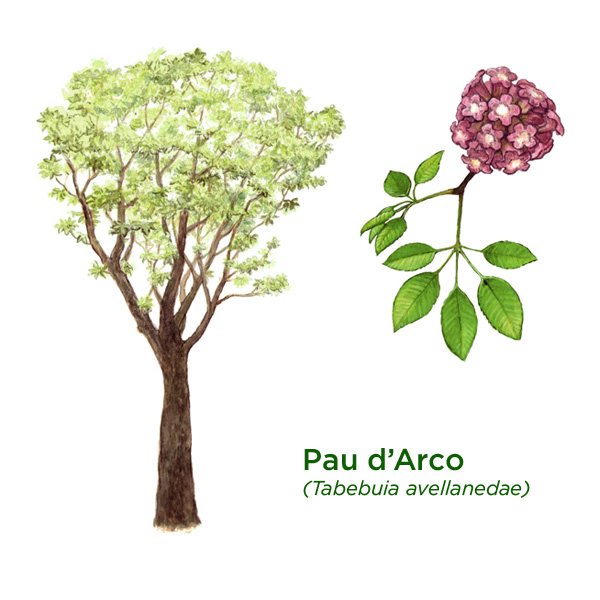 The
bark of the South American evergreen tree has been traditionally used to treat
multiple ailments, including arthritis, fever, and different cancers. Scientists
have identified anti-inflammatory, antifungal, antiviral, and antibacterial
properties, but there have been no human studies on its effect on arthritis
pain.
The
bark of the South American evergreen tree has been traditionally used to treat
multiple ailments, including arthritis, fever, and different cancers. Scientists
have identified anti-inflammatory, antifungal, antiviral, and antibacterial
properties, but there have been no human studies on its effect on arthritis
pain. Pau d'arco can be taken as a supplement pill, dried bark tea, or a tincture made with alcohol. Taken in large amounts, Pau d'arco can be toxic. It’s important to speak with your doctor before taking this herbal remedy.
Quercetin
This
plant-based flavonoid is responsible for giving many flowers, fruits, and
vegetables their color. Quercetin has potent antioxidant and anti-inflammatory
properties, and may benefit those with RA.
Studies have shown that when patients adopted a vegan-based diet, high in uncooked berries, fruits, vegetables, and nuts containing the antioxidant quercetin, they reported fewer symptoms. However, there is no evidence that the reported effects were directly due to the antioxidants.
Besides being available in fresh produce, it can also be found in capsule form.
Studies have shown that when patients adopted a vegan-based diet, high in uncooked berries, fruits, vegetables, and nuts containing the antioxidant quercetin, they reported fewer symptoms. However, there is no evidence that the reported effects were directly due to the antioxidants.
Besides being available in fresh produce, it can also be found in capsule form.
Rehmannia or Chinese Foxglove (Rehmannia glutinosa)
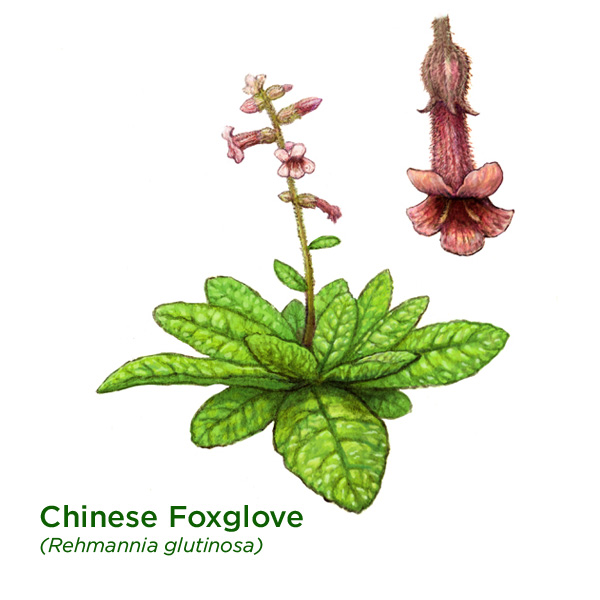 Traditional
Chinese Medicine (TCM) has used Chinese foxglove for thousands of years to
treat a variety of ailments, including asthma and RA. As an adrenal tonic, it
may be helpful in addressing some symptoms of RA. Chinese foxglove is rich in
amino acids and vitamins A, B and C, and its anti-inflammatory properties may
be effective in reducing joint pain and swelling.
Traditional
Chinese Medicine (TCM) has used Chinese foxglove for thousands of years to
treat a variety of ailments, including asthma and RA. As an adrenal tonic, it
may be helpful in addressing some symptoms of RA. Chinese foxglove is rich in
amino acids and vitamins A, B and C, and its anti-inflammatory properties may
be effective in reducing joint pain and swelling. It is available in liquid form, or as a powder to be turned into a tincture. There have been very few human studies validating the remedy as a viable and safe treatment. Although it is listed in Pharmacopoeia of the People’s Republic of China, it is not covered in European Sale Lists (ESL), nor is it given FDA’s safe approval rating (GRAS).
Rosemary (Rosmarinus officinalis)
This
Mediterranean shrub has been widely used as a food spice and fragrance in
cosmetics. The plant has been praised for its medicinal benefits for centuries,
traditionally used to improve memory, relieve muscle pain, and treat
indigestion.
In lab studies, rosemary demonstrates antioxidant properties and when applied topically, it is believed to reduce muscle pain. However, there is no scientific evidence that the topical cream reduces arthritic pain.
Rosemary oil may be used as a topical application, and capsule supplements may be ingested, although the University of Maryland Medical Center recommends the daily dose should not exceed four to six grams of the dried herb.
In lab studies, rosemary demonstrates antioxidant properties and when applied topically, it is believed to reduce muscle pain. However, there is no scientific evidence that the topical cream reduces arthritic pain.
Rosemary oil may be used as a topical application, and capsule supplements may be ingested, although the University of Maryland Medical Center recommends the daily dose should not exceed four to six grams of the dried herb.
Thunder God Vine (Tripterygium wilfordii)
Native
to China, Japan, and Korea, this perennial vine has been used in TCM for hundreds
of years to treat autoimmune and inflammatory diseases. Lab studies have demonstrated that extracts of the root may effectively
fight inflammation and have anti-cancer effects.
Thunder god vine comes with the risk of serious side effects, including diarrhea, upper respiratory infections, and skin rash—and can be poisonous if not extracted from the root properly. The herb is not manufactured in the United States and availability is limited.
One study, funded by NIAMS, concluded that there were significant anti-inflammatory benefits of the vine, but further study is needed to assess potential risks.
Thunder god vine comes with the risk of serious side effects, including diarrhea, upper respiratory infections, and skin rash—and can be poisonous if not extracted from the root properly. The herb is not manufactured in the United States and availability is limited.
One study, funded by NIAMS, concluded that there were significant anti-inflammatory benefits of the vine, but further study is needed to assess potential risks.
Turmeric (Curcuma longa)
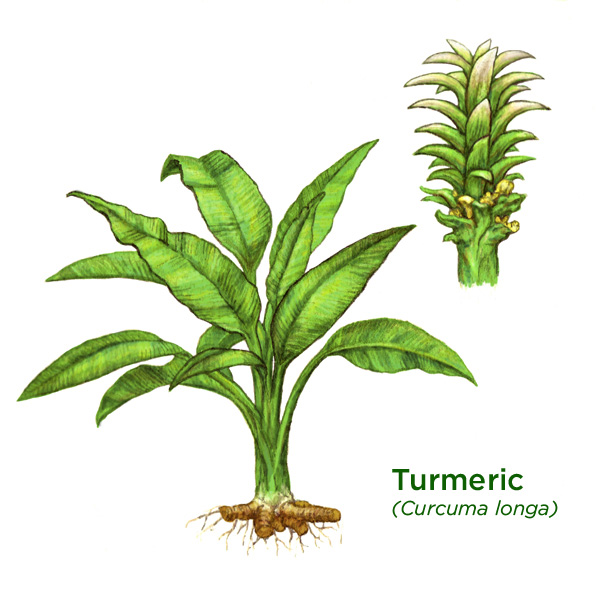 Turmeric
has been used as a medicinal in Ayurvedic and Chinese herbal medicine for over
four thousand years to treat a wide range of ailments, including digestive and
liver conditions.
Turmeric
has been used as a medicinal in Ayurvedic and Chinese herbal medicine for over
four thousand years to treat a wide range of ailments, including digestive and
liver conditions.Research has shown that turmeric may help reduce inflammation, but there has been conflicting evidence and results are inconclusive. Curcumin, the active chemical in turmeric, is a powerful antioxidant, and evidence has shown that the substance helps to lower inflammation.
Turmeric can be easily introduced through diet, or in a capsule or tincture.
Vitamin D
Research
has shown that low levels of vitamin D can contribute to the onset and
progressive symptoms of RA. According to information provided by Johns Hopkins, the vitamin significantly contributes to joint and bone health. Vitamin
D is “an active steroid hormone that binds to receptors in a host of vulnerable
tissues—including the joints affected by arthritis.”
Making sure you get outside in the sunshine may help, but is not substantial enough to provide the body with its daily vitamin D requirement. A study provided by the NCBI also confirms that sufficient vitamin D intake can inhibit the development of RA.
Making sure you get outside in the sunshine may help, but is not substantial enough to provide the body with its daily vitamin D requirement. A study provided by the NCBI also confirms that sufficient vitamin D intake can inhibit the development of RA.
White Willow Bark (Salix alba)
The
bark of white willow (and other Salix species)
has been used to treat inflammation for thousands of years. In 500 BC, Hippocrates
advised patients to chew on the tree’s bark to ease pain. Evidence has shown that
the active ingredient in willow, salicin,
reduces the production of pain-inducing chemicals in nerves; Salix species are credited as the
natural source of aspirin.
Studies show inconclusive evidence of the benefits of this bark for RA patients. A slight reduction in pain was noted in two UK trials, but conclusive results as to the bark’s efficacy have not been substantiated.
As with aspirin, willow bark can interact with certain drugs, including anti-inflammatories and anticoagulants. Additionally, willow bark can lead to stomach upset and an allergic reaction. Always talk to your doctor before taking willow bark.
Click Here for more information on RA
Studies show inconclusive evidence of the benefits of this bark for RA patients. A slight reduction in pain was noted in two UK trials, but conclusive results as to the bark’s efficacy have not been substantiated.
As with aspirin, willow bark can interact with certain drugs, including anti-inflammatories and anticoagulants. Additionally, willow bark can lead to stomach upset and an allergic reaction. Always talk to your doctor before taking willow bark.
Click Here for more information on RA

